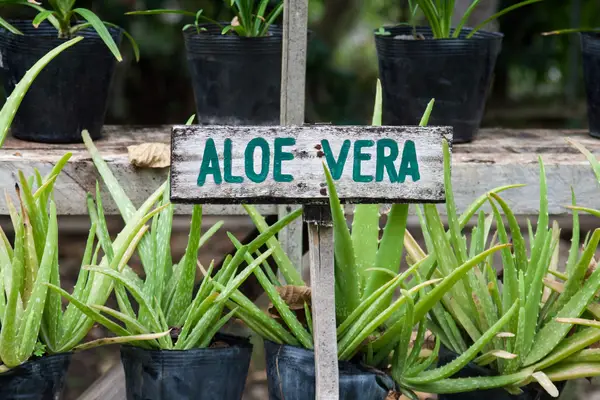Aloe vera is an excellent plant that is quite popular for its healing properties and beauty. If you love gardening and want to adorn your home with aesthetically appealing plants, aloe vera can be your perfect choice.
Although this plant doesn’t require much maintenance, one common issue that many aloe vera plant owners face is brown tips on the leaves. If you have an Aloe plant in your home or garden, you must be aware of this issue.
“Should I cut the brown tips off my Aloe plant?”, is a common question that many people ask when their Aloe plants get damaged. So, if you are also wondering whether you should cut the brown tips off your plant, don’t worry; we’ve got you covered.
Here’s everything you need to know about cutting brown tips off your Aloe plant and keeping them safe.

Why Are the Tips of My Aloe Plant Turning Brown?
Before you cut down brown tips from Aloe plants, first, it’s important to understand actually what causes this issue. There is not one particular reason behind this problem; various reasons can cause brown tips on Aloe plants. Here are some of the major reasons that can be causing brown tips on your Aloe plants:
Overwatering
If you have an Aloe plant at home, you should know that these plants don’t need much water to survive. That’s why many people tend to overwater their Aloe plants, which can often cause damage to their roots.
When these plants get overwatered, they can’t absorb proper nutrients, which can cause dehydration and fungal diseases like root rot.
So, if you see brown tips on your aloe vera plant, it might be dehydrated. But don’t make the mistake of adding more water because excessive water at that point can worsen the problem.
Under-watering
Like overwatering, insufficient water can also create several problems for aloe vera plants. If the tips of your Aloe plant become dry and brown, this could be a sign that it needs more water.
Ignoring the dryness will gradually cause it to spread throughout the leaf, and it might even start to curl up and gradually fall off.
Chemicals in Tap Water
Usually, tap water in our homes contains various substances like fluoride, calcium, and chlorine which are often harmful to plants. These elements can accumulate around the roots of your aloe vera plant and prevent it from absorbing essential nutrients.
As a result, the plant’s leaves might turn brown and eventually fall off. If you notice a white, crusty substance on the surface of the potting mix, it’s a sign of chemical damage to the plant.
Sun Exposure
Even though aloe vera plants can tolerate hot and dry conditions, they need some shading to thrive during hot conditions.
When your plant gets excessive sunlight, its leaves might start to burn, lose their green color, and as a result, get damaged. Windows can increase the sun’s intensity, which can severely sunburn aloe plants.
Low Levels of Humidity
Aloe vera plants are incredibly tough and can survive in extremely low-humid environments that would harm other houseplants.
However, they still need at least 30% humidity to stay healthy, and they lose more water from the leaves at low humidity levels. When the humidity in the air is too low, it can potentially kill your aloe vera plant in extreme cases.
So, if you see aloe vera leaves turning brown, and you have a low-humid environment, that could be causing this issue.
Fungal Diseases
Although aloe vera plants are relatively resistant to pests and diseases, they are still vulnerable to different types of fungal infections. When the brown tips of your plant are moist and squishy, there is a chance that a fungal infection is to blame.
If you see a sooty dirt-like substance on the leaves, it can be caused by insects such as aphids. They can leave sticky residue on the plant, forming a black, sooty mold on the plant’s leaves.
Should I Trim My Aloe Plant?
Trimming can be an effective remedy if you start to notice brown tips on your aloe vera plant. Sometimes, brown tips can cover a significant part of the leaf and spread quickly to other parts of the plant.
In these scenarios, removing the brown tips is best to prevent the infection from spreading to other leaves. Besides, trimming can also help new leaves to grow and get proper nutrients from the roots.
But you should know that too much pruning can also damage the Aloe plants as well. That’s why it’s crucial to learn how to properly prune aloe vera plants to get the best result.
When Should You Prune Aloe Vera Plants?
The best period for pruning your aloe vera plant is during the first half of spring. Pruning once or twice a year is generally enough unless you plan to extract the gel from the leaves.
But as soon as you notice any brown or damaged leaves on your Aloe plant, you should start to prune right away. Pruning the damaged leaves can prevent the issue from spreading to the rest of the plant.
Besides, removing any damaged or brown leaves can be a good way to give the plant a fresh start. This can help the plant redirect its energy towards new growth and promote overall health.
How to Trim Your Aloe Vera Plant?
To cherish your useful aero vera plant, you must understand how it functions. Aloe plants have a fast-growth rate compared to other potted plants. That’s why you should be careful because pruning carelessly may result in a loss of nutrition for these plants.
While pruning your aloe vera, remember only to prune the portion which can potentially damage the plant. Here are some easy steps that you can try for pruning Aloe plants the right way:

1. Identify the Brown leaves
Aloe vera brown tips must be pruned! Identifying the damaged leaves is the first thing that you must do before you start pruning. To keep your aloe plant healthy, keep an eye out for three types of leaves: dying leaves, dry leaves, and brown leaves.
Among them, brown leaves can cause the most damage to plants, so you should remove them first.
2. Use the Right Tools
When it comes to pruning your aloe vera plant, it’s recommended to use scissors instead of a blade or knife. The reason is, Aloe leaves are typically thick, and you may end up hurting yourself with sharp tools. You must also be extra careful and wear protective gloves while using blades or knives.
3. Be Careful While Pruning
After identifying the damaged leaves and gathering the right tools, you should start the pruning process cautiously.
While pruning, simply cut the leaf as close to the base as possible with your pruning shears or scissors. The remaining portion of the leaf will dry out and drop off on its own over time.

Tips to keep your Aloe safe
To keep your aloe vera plants in good condition, check out these simple but effective tips:
Reduce Watering
After watering the plants, make sure to provide a drainage system that helps the water drain out and prevent overwatering. To make this easier, we suggest using pots such as fabric grow bags that have a good drainage design.
Water Aloe Vera Plants in Dry Soil
To ensure that the soil is dry before watering, stick your finger about an inch into the soil. Only water the plant if the soil feels dry to the touch.
Keep Your Aloe Vera Plants in Warm Temperature
Keep Aloe plants in typical household temperatures and humidity levels, ranging from 55°-80°F and 40% to 50% humidity.
Prevent Aloe Sunburn
If your Aloe plant is getting too much sun from the window, it can suffer from sunburn. That’s why you should consider relocating it to a spot with indirect light or moving it to a window with less sunlight.
Don’t Use Too Much Fertilizer
Aloe plants aren’t heavy feeders, so you don’t need to fertilize them often. Instead, just use a commercial succulent fertilizer once a year, preferably in the spring.
Conclusion
To sum things up, “should I cut the brown tips off my Aloe plant?”, the answer is yes, you should. Cutting the brown tips off can reduce the damage’s severity and improve the Aloe plants’ condition.
However, if you don’t know the right process to trim these plants, you can end up causing more harm than good. That’s why you should learn how to prune your Aloe plant to promote its health and appearance.

Darrell has a passion for gardening that he inherited from his father. Go here to read more about the influence his father played in his love for gardening. If you want to send Darrell a quick message, then visit his contact page here.

![How to Water Indoor Plants [Plant Care 101]](https://wraxly.com/wp-content/uploads/2021/03/How-to-Water-Indoor-Plants-Plant-Care-101-1200-1024x576.webp)

![Growing Plants from Cuttings [A Simple Guide]](https://wraxly.com/wp-content/uploads/2021/03/Growing-Plants-from-Cuttings-A-Simple-Guide-1200-1024x576.webp)
